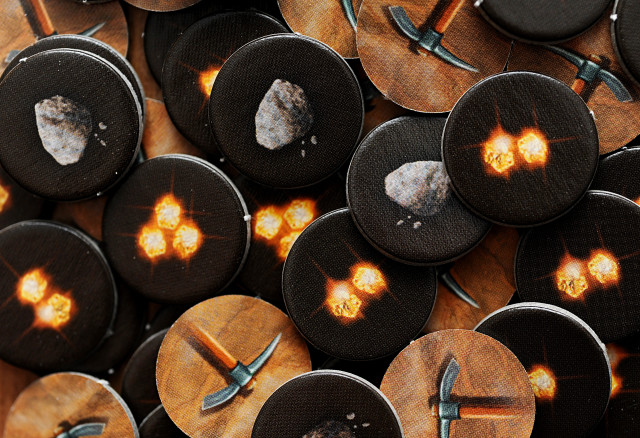Carcassonne, the 2000 hit by Klaus-Jurgen Wrede is one of the most expanded upon games ever made. There’s dispute as to which is the best iteration, but any game that can support so many re-imaginings must have done something right the first time around.
Whenever you’re dealing with an expansion or a new stand alone game that relies on an old system it’s a fine line. You want to keep enough of the old game to keep fans happy, but you need to add and change enough to make it worth purchasing.
Carcassonne: Gold Rush does a fine job of keeping the familiar tile-laying mechanic made popular by the original and tweaking the scoring and tension enough to make the classic game feel fresh.
In Gold Rush you’re out to discover the wild west and dig up some gold if you’re lucky. Tiles are drawn and added to the board in the regular fashion. Mountains replace castles, railroads replace roads, cities replace cloisters and those wide expanses of land are no longer farmer’s fields, they’re now prairies.
Players start the game with four cowboys and a tent. On each turn a player will add a tile to the growing board, mountain connects to mountain, railroad to railroad and prairie to prairie. When a new mountain tile gets placed you randomly add as many mining tokens as indicated on the piece. That gold can be mined by tents or all are awarded to the majority player when a mountain closes.
After placing a tile you have some options. You can place a cowboy on the board, place or move your tent to an unoccupied mountain space or mine for gold. Mining for gold allows you to steal gold tokens from a mountain that your tent is placed in. 
As mentioned above, instead of awarding specific points for closing, a mountain gives the majority player all of the remaining mining tokens. Each token is worth one two, three or five gold or nothin’ but gravel…which stinks to get.
Railroads work mostly like roads needing to be closed on both ends to score your cowboy. If there is only one locomotive on the railroad the score is doubled, otherwise it’s worth one point for each tile.
Cities like Nashville and El Paso gain you points similar to how a cloister would. Cowboys will score you three points for every closed road coming out of the city.
Cowboys can be placed like farmers just like in the original, but just like the original you won’t get them back until the end of the game. With only four cowboys at your disposal you’d better make sure it’s a good investment. During the end scoring farmers will earn you two point for each tipi camp and four points for each herd of horses in your prairie.
I usually not a huge fan of expansions, but I like the idea of a new stand alone game that uses a familiar system in a different way. Carcassonne has done this in the past with Hunters and Gatherers and more recently South Seas. There are a number of different variations on the Catan system such as Struggle for Rome and Settlers of America. It’s not necessary to own them or even try them all, but if you’re a fan, then Gold Rush is certainly worth checking out.
Comments
No comments yet! Be the first!